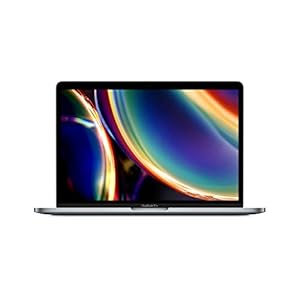Knowing your laptop’s specifications is vital. It is essential to know this before upgrading your system, especially. The specification for each device differs.
You might need specific information about your laptop; for example, you want to know its performance and reliability. When checking the specifications, you would have to focus on RAM, speed, motherboard, and video card amongst others.
Checking for your laptop’s specifications is not difficult. The following steps you would read would guide you on how to do this.
Table of Contents
How to check for Windows Laptop’s Specifications
The simple way of checking is to click on the “Start” icon. Type in “System Specifications” in the “search programs and files.” Select “system summary” to get detailed information about your laptop.
Alternatively;
- After switching on your computer, click on the “My Computer” icon on the desktop of your laptop or check for it on the “Start” menu.
- Click on “properties” which you will find at the bottom. Some specifications will pop-up. Select the “General”
- At the top find “System.” Here you will see what operating system is on your system and its version
- At the “Computer Session” you will get details about what processor your laptop processes, the memory in bytes (megabytes or gigabytes). In the processor details, you will see the processor’s name first and then the speed follows. You identify the speed rate by the GHz. It is usually measured in GHz.
- Another thing to look out for is the hard drive. If you want to know the amount of hard drive space on your laptop, click on “My Computer” and select the “Hard-Drive” icon.
- Also, you can check for properties where you can check for “Capacity”. Find how many gigabytes the system has and how much space is left. You can see space on the graph. Also, how much space you have used and how much you have left.
-
 Dell Alienware m15(R3) 39.62 cm (15.6-inch) FHD Gaming Laptop (10th Gen Core i7-10750H/16GB/512GB SSD/Windows 10 Home…$174,990.00
Dell Alienware m15(R3) 39.62 cm (15.6-inch) FHD Gaming Laptop (10th Gen Core i7-10750H/16GB/512GB SSD/Windows 10 Home…$174,990.00 -
 HP OMEN 10th Gen Intel Core i7 Processor 15.6″ (39.62cms) FHD Gaming Laptop (i7-10750H/16GB/1TB SSD/Windows 10/300 Nits/144 Hz/NVIDIA GTX 1650ti 4GB/Shadow Black/2.36 kg), 15-ek0019TX$123,990.00
HP OMEN 10th Gen Intel Core i7 Processor 15.6″ (39.62cms) FHD Gaming Laptop (i7-10750H/16GB/1TB SSD/Windows 10/300 Nits/144 Hz/NVIDIA GTX 1650ti 4GB/Shadow Black/2.36 kg), 15-ek0019TX$123,990.00 -
 Lenovo Ideapad L340 Gaming Intel Core i7 9th Gen 15.6″ (39.62cms) FHD Gaming Laptop (8GB/1TB+256 GB SSD/Windows 10/Office/NVIDIA GTX 1650 4GB/Black/2.2Kg), 81LK01J7IN$59,990.00
Lenovo Ideapad L340 Gaming Intel Core i7 9th Gen 15.6″ (39.62cms) FHD Gaming Laptop (8GB/1TB+256 GB SSD/Windows 10/Office/NVIDIA GTX 1650 4GB/Black/2.2Kg), 81LK01J7IN$59,990.00
For Macbook O5 X
From your Apple Menu, Click on “About this Mac” and read through the specifications of your Macbook.
Find information on graphics unit, processor, RAM.click the “Hardware” icon. You get to see detailed info about the hardware of your system
Check the System report. This will take you to the System Report window.
-
 Apple 2019 MacBook Pro (16-inch/40.65 cm, 16GB RAM, 1TB Storage, 2.3GHz 9th Gen Intel Core i9) – Space Grey$239,900.00
Apple 2019 MacBook Pro (16-inch/40.65 cm, 16GB RAM, 1TB Storage, 2.3GHz 9th Gen Intel Core i9) – Space Grey$239,900.00 -
 Apple MacBook Air (13-inch, 8GB RAM, 128GB Storage, 1.8GHz Intel Core i5) – Silver$73,490.00
Apple MacBook Air (13-inch, 8GB RAM, 128GB Storage, 1.8GHz Intel Core i5) – Silver$73,490.00 -
 Apple 2020 MacBook Pro (13.3-inch/33.78 cm, 16GB RAM, 512GB SSD, 2.0GHz Quad-core 10th-Generation Intel Core i5 Processor, Four Thunderbolt 3 Ports) – Space Grey$158,990.00
Apple 2020 MacBook Pro (13.3-inch/33.78 cm, 16GB RAM, 512GB SSD, 2.0GHz Quad-core 10th-Generation Intel Core i5 Processor, Four Thunderbolt 3 Ports) – Space Grey$158,990.00
Device Manager
Another way to check for specifications on your system is by using the Device Manager.
If you want well-detailed information about the hardware on your laptop, the device manager is an excellent way to go. It gives you the kind of propriety hardware your computer uses.
To make use of this means, you have to;
- You can click on the “Start” icon on your laptop screen
- There would be a pop-up on the left side of your screen. Click on “Device Manager” or any icon indicating the device.
- Check through the various hardware categories on your system and decide the one you want to open. For example, if you want to know more about your computer’s processor, select the processor and check through all the information—the same thing with the other properties.
- Click the “expand” option you will find on the left-hand side of the “category.” The indented items below the category will appear.
- Also, check through the list of hardware depending on your choice. Check the properties of the hardware. Be careful not to make the mistake of uninstalling anything without fully understanding how to. This can affect your system and stop it from working.





